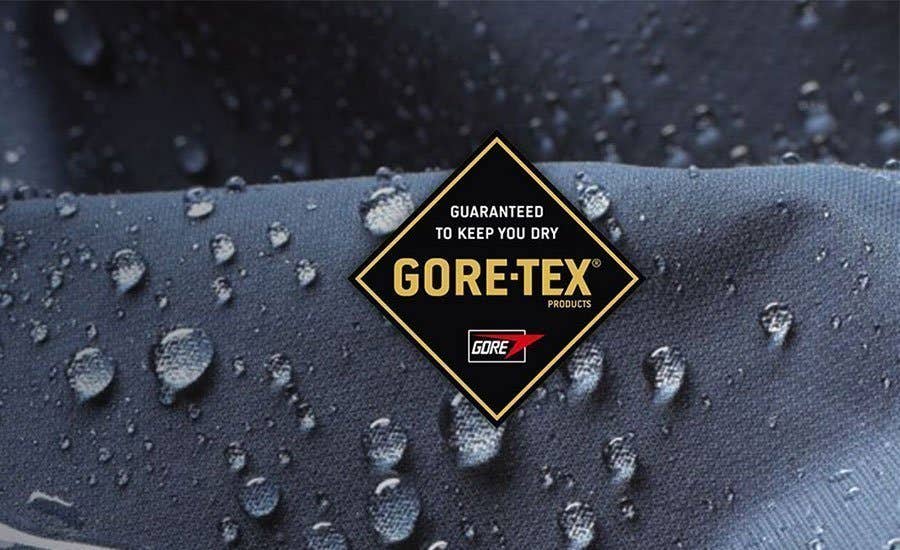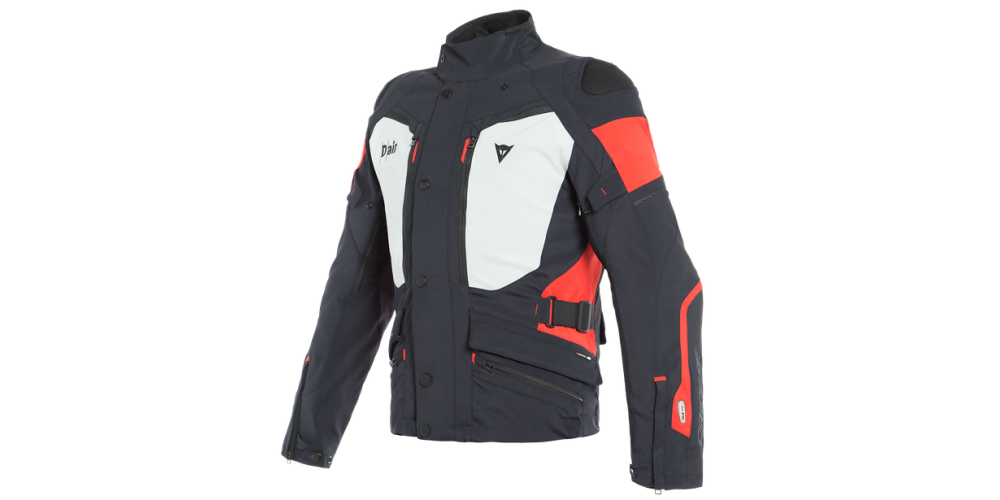The number of different technologies that are available in bike gear nowadays is slightly mind-boggling. Gone are the days of simple leathers, denim or waxed cotton, now there are membranes, thermal regulation on top of different types of impact and abrasion resistance. Unfortunately for the hapless biker, brands often have their own versions of each thing, but fortunately we’re going to go through some of the ones most common to Dainese (and next week we’ll examine Alpinestars). Hopefully after this you’ll be a bit more confident decoding what means what!


First up, waterproof membranes. There’s one you’ve almost certainly heard of, and that’s Goretex. World renowned as being one of the best waterproofing solutions available, Goretex works on the principle of having pores that can allow water vapour to escape but keep larger liquid water droplets out, thus allowing breathability. Many brands have their own version of this tech, and in Dainese’s case it’s called D-Dry, and it works very similarly. Goretex products almost always fetch a premium however, and rightly so. D-Dry comes close but considering Goretex is wise. More recent laminated versions (membrane on the outer fabric – D-Dry Plus) have one distinct advantage; no more soggy outer layers to weigh or cool you down, although obviously they cost a fair bit more.


Dainese make use of a wide range of leathers and abrasion resistant materials, too many to cover here in extensive detail. A few of their most advanced materials include D-Skin 2.0 leather which achieves higher than average abrasion resistance, while resin and silicon waxes improve resistance to the other rigours of riding. Tutu leather again offers above average abrasion resistance but is extremely supple compared to other leathers, allowing for greater flexibility, along with improved water and oil repellence. Aramid fibre fabrics and Cordura are used, amongst others, to provide exceptional abrasion protection. Aramid fibres commonly appear in their denim jeans to provide crucial protection on impact zones, while Cordura is used extensively in textiles with the same aim. D-Stone is another common one mainly used in boots and textile clothing. Made of twisted nylon with nylon coated elastic inserts you end up with a flexible, forgiving material with abrasion protection that rivals leather. There are other ones, but rest assured they work as intended!


Moving onto impact protection and the range is extensive once again unsurprisingly. From aluminium or titanium shoulders, to Pro-Shape armour Dainese are doing their best to keep riders intact when wearing their gear! Pro-Shape armour is CE-rated yet is extremely light, soft and flexible, just what you want from armour pads, and ideal for more casual gear such as classic-style leather jackets or aramid fibre jeans. Those metallic shoulders, and elbows for that matter, provide extra protection for your joints by offering a rigid sliding surface, plus they look a little space-age to boot. Dainese jackets commonly don’t include a built-in back protector. Ideally Dainese want their riders to use a dedicated back protector, however they do offer pockets for conventional back armour in most of their jackets.


Thermal insulation is an important one to us in the UK and there’s a wide range offered by Dainese. A relative newcomer Primaloft, or fake down as it can be known, is becoming a valid alternative to already highly effective goose down insulation. The major drawback of goose down is that once it becomes wet it loses its insulative properties, while Primaloft rivals goose down when dry and remains insulative when wet, ideal for our soggy weather. Windstopper fabric is fairly self-explanatory compared to some terminology – it stops the wind! Simply presenting a barrier to a cool breeze can make an otherwise freezing ride quite pleasant, anyone who’s put a good set of waterproof outers on can testify to this. Attempting to do the opposite but enhance thermal regulation, Coolmax is a well-established technology that enhances the wicking effect of fabric to better keep you cool.
As you can see there are a wide range of terms and tech that Dainese offer in their gear to keep riders safe and comfortable. If ever you’re in doubt as to what these mean then don’t hesitate to contact us, either by visiting us in store in Stevenage, or by remote methods such as the web chat on our website, email or phone (customer.services@bikestop.co.uk / +44 (0)1438 317038)





